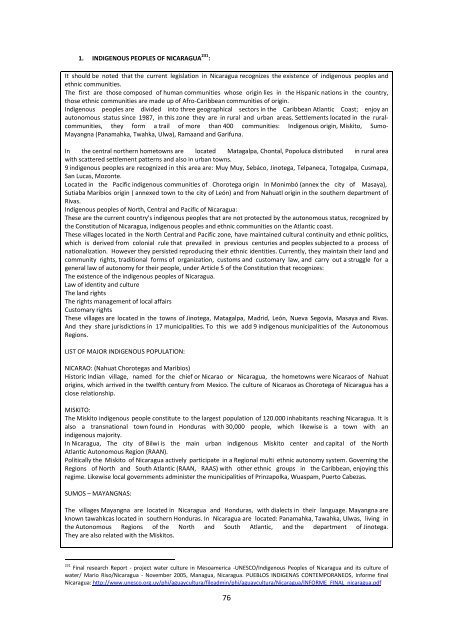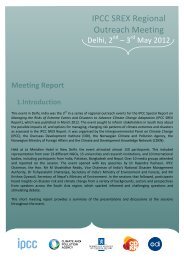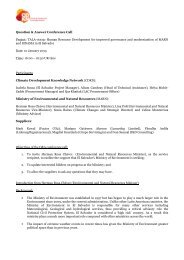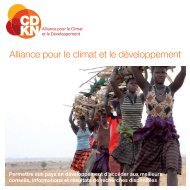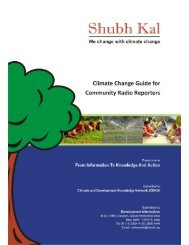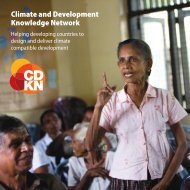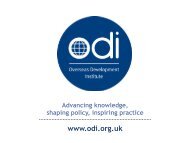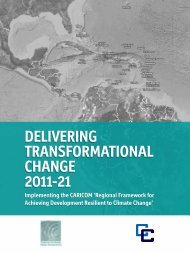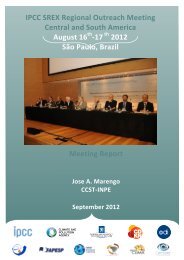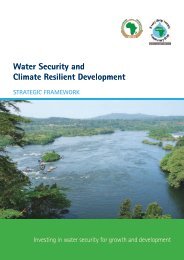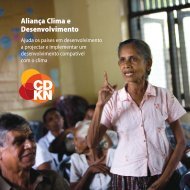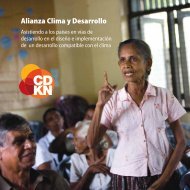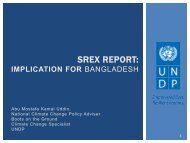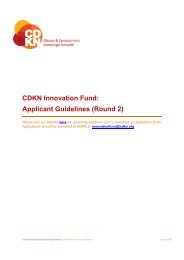1. INDIGENOUS PEOPLES OF NICARAGUA 231 :It should be noted that the current legislation in Nicaragua recognizes the existence of indigenous peoples andethnic communities.The first are those composed of human communities whose origin lies in the Hispanic nations in the country,those ethnic communities are made up of Afro-Caribbean communities of origin.Indigenous peoples are divided into three geographical sectors in the Caribbean Atlantic Coast; enjoy anautonomous status since 1987, in this zone they are in rural and urban areas. Settlements located in the ruralcommunities,they form a trail of more than 400 communities: Indigenous origin, Miskito, Sumo-Mayangna (Panamahka, Twahka, Ulwa), Ramaand and Garifuna.In the central northern hometowns are located Matagalpa, Chontal, Popoluca distributed in rural areawith scattered settlement patterns and also in urban towns.9 indigenous peoples are recognized in this area are: Muy Muy, Sebáco, Jinotega, Telpaneca, Totogalpa, Cusmapa,San Lucas, Mozonte.Located in the Pacific indigenous communities of Chorotega origin In Monimbó (annex the city of Masaya),Sutiaba Maribios origin ( annexed town to the city of León) and from Nahuatl origin in the southern department ofRivas.Indigenous peoples of North, Central and Pacific of Nicaragua:These are the current country's indigenous peoples that are not protected by the autonomous status, recognized bythe Constitution of Nicaragua, indigenous peoples and ethnic communities on the Atlantic coast.These villages located in the North Central and Pacific zone, have maintained cultural continuity and ethnic politics,which is derived from colonial rule that prevailed in previous centuries and peoples subjected to a process ofnationalization. However they persisted reproducing their ethnic identities. Currently, they maintain their land andcommunity rights, traditional forms of organization, customs and customary law, and carry out a struggle for ageneral law of autonomy for their people, under Article 5 of the Constitution that recognizes:The existence of the indigenous peoples of Nicaragua.Law of identity and cultureThe land rightsThe rights management of local affairsCustomary rightsThese villages are located in the towns of Jinotega, Matagalpa, Madrid, León, Nueva Segovia, Masaya and Rivas.And they share jurisdictions in 17 municipalities. To this we add 9 indigenous municipalities of the AutonomousRegions.LIST OF MAJOR INDIGENOUS POPULATION:NICARAO: (Nahuat Chorotegas and Maribios)Historic Indian village, named for the chief or Nicarao or Nicaragua, the hometowns were Nicaraos of Nahuatorigins, which arrived in the twelfth century from Mexico. The culture of Nicaraos as Chorotega of Nicaragua has aclose relationship.MISKITO:The Miskito indigenous people constitute to the largest population of 120.000 inhabitants reaching Nicaragua. It isalso a transnational town found in Honduras with 30,000 people, which likewise is a town with anindigenous majority.In Nicaragua, The city of Bilwi is the main urban indigenous Miskito center and capital of the NorthAtlantic Autonomous Region (RAAN).Politically the Miskito of Nicaragua actively participate in a Regional multi ethnic autonomy system. Governing theRegions of North and South Atlantic (RAAN, RAAS) with other ethnic groups in the Caribbean, enjoying thisregime. Likewise local governments administer the municipalities of Prinzapolka, Wuaspam, Puerto Cabezas.SUMOS – MAYANGNAS:The villages Mayangna are located in Nicaragua and Honduras, with dialects in their language. Mayangna areknown tawahkcas located in southern Honduras. In Nicaragua are located: Panamahka, Tawahka, Ulwas, living inthe Autonomous Regions of the North and South Atlantic, and the department of Jinotega.They are also related with the Miskitos.231 Final research Report - project water culture in Mesoamerica -UNESCO/Indigenous Peoples of Nicaragua and its culture ofwater/ Mario Riso/Nicaragua - November 2005, Managua, Nicaragua. PUEBLOS INDIGENAS CONTEMPORANEOS, Informe finalNicaragua: http://www.unesco.org.uy/phi/aguaycultura/fileadmin/phi/aguaycultura/Nicaragua/INFORME_FINAL_nicaragua.pdf76
The Mayangnas are people who are deep in the jungles of Nicaragua and Honduras, Caribbean, difficult toaccess. The main communities are: Musawas, Wasakin, Karawala. The first 2 are in the towns ofBonanza and Rosita in the RAAN and the second is the county seat of Desembocadura in the RAAN.There are about 36 communities in Nicaragua and Mayangna and about 5 in Honduras. Mayangnas peoplesconstitute the second indigenous people of Nicaragua, speaking native language, adding 15,000 residents.Politically, the natives of Bicaragua from Mayangnas participate actively in the self-governing, multiethnic regional,through representatives in the government of the RAAN and RAAS. Along with other indigenous peopleswho have the same regimen. Despite its relative minority population, the Home Rule Act allowed under theprinciple of ethnic democracy, participation on the board in the regional councils. At the same time they have theadministration of local governments in the municipalities of Bonanza, Santa Rosa and the Desembocadura ofRio Grande.RAMA:The indigenous town of Rama or Ramaki, is located exclusively in the Nicaraguan Atlantic coast. Most live inthe RAAS in the town of Bluefields, and a minority is in the municipality of San Juan de Nicaragua, in the departmentof Rio San Juan.The village of Rama consists of about 1,600 inhabitants. Most of the population lives on the island of Rama RamaCai, of 22 hectares, is located in the coastal lagoon of the bay of Bluefields.GARIFUNA 232 :The Garifuna are an ethnic group of African descent residing in various regions of Central America, Caribbean andUnited States. They are also known as Garifune or Black Caribs. It is estimated that over 600,000 are residents inHonduras, Belize, Guatemala, Nicaragua, Mexico and South America. In fact, the term "Garifuna" refers tothe individual and his language, while Garinagu is the term used for the community of people.The best known version of the emergence of the 'Black Caribs' takes us to 1635, when two Spanish shipscarrying slaves to the West Indies from what we know today as Nigeria shipwrecked near the island of SanVicente. The slaves escaped the ship and reached the island, where they were welcomed by the Caribs, who offeredthem protection. Marriages between them originated Garinagu people, now known as Garifuna. This nameis derived from "Kalipuna" one of the names used by the Caribs to refer to them. In addition to the previousexplorers shipwrecked from Africa, it should be noted that the Caribs captured slaves in their struggle against theBritish and French in neighboring islands and many of those captured were inserted in their communities.When the British invaded the island of San Vicente, they opposed the French settlements and their alliances withthe Caribs. When they surrender to the British in 1796, the "Black Caribs" were considered as enemies anddeported, first to Jamaica and then to Roatan, an island that today belongs to Honduras. The British separatedthem, differentiating between those who had more the appearance of indigenous and those who were closest tothe Africans, the latter being declared as the "real" enemies to be deported while the others were allowed toremain on the island.Over 5,000 Black Caribs were deported, but only about 2,500 survived the trip to Roatan. Since the island was verysmall and infertile to sustain the population, the Garifuna petitioned the Spanish authorities in Honduras to beallowed to settle on land. The Spanish allowed it in exchange for using them as soldiers and so they expanded to theCaribbean coast of Central America.Today most of the Garifunas have settled in the Gulf of Honduras and in particular in southern Belize, on the coastof Guatemala (around Livingston), on the island of Roatan in the coastal towns of Honduras and Nicaragua, and inseveral U.S. cities.The Garifuna speak English, Spanish and Garifuna. The Garifuna of Guatemala and Honduras are Garifuna andSpanish speakers, while the ones from Belize and the U.S. also speak English as their mother tongue.1. LANGUAGE 233 :The official language is Spanish, on the Atlantic Coast Creole English is spoken andother native languages such as:INDIGENOUS LANGUAGECHARACTERISTICSPEOPLESMISKITU Miskito Miskito Language: Integrates the Linguistics family calledMisumalpa , most of the population speaks 3 languages,Miskito, Creole English and Spanish are alsospoken mayangha sumo.MAYANGAS- Sumo The language of this people is also called Sumo part of the232 Wikipedia .Garifuna:: http://es.wikipedia.org/wiki/Gar%C3%ADfuna_(etnia)233 Final research project-water culture in Mesoamerica - UNESCO / Indigenous Peoples of Nicaragua and its water culture / MarioRiso / Nicaragua - November 2005, Managua, Nicaragua. CONTEMPORARY INDIGENOUS PEOPLES, Final Report Nicaragua:http://www.unesco.org.uy/phi/aguaycultura/fileadmin/phi/aguaycultura/Nicaragua/INFORME_FINAL_nicaragua.pdf77
- Page 3 and 4:
Executive SummaryCentral America is
- Page 5 and 6:
Central is located in the "Ring of
- Page 7 and 8:
Study ContentAs an innovative theme
- Page 9 and 10:
that coexist in the universe. This
- Page 11 and 12:
Central America level, is the only
- Page 13 and 14:
of Mesoamerica has been explained a
- Page 15 and 16:
possesses effective cultural commun
- Page 17 and 18:
Additionally, to succeed and achiev
- Page 19 and 20:
eforestation, hydrological planning
- Page 21 and 22:
General thematic introduction on Cl
- Page 23 and 24:
Central American Governments should
- Page 25 and 26: projected 109 conditions, changes o
- Page 27 and 28: General introduction on the themati
- Page 29 and 30: participatory manner, to address di
- Page 31 and 32: Causes and complementary consequenc
- Page 33 and 34: Organizational and legal contextWhi
- Page 35 and 36: The three bodies within the SICA ar
- Page 37 and 38: Based on research of available info
- Page 39 and 40: SE-CONREDCivilProtectionSNETCCNISCO
- Page 41 and 42: Synergy model that displays the add
- Page 43 and 44: Added value of indigenous and local
- Page 45 and 46: They do not work in a separate mann
- Page 47 and 48: demand for agricultural raw materia
- Page 49 and 50: Amazon DIPECHO Project “Strengthe
- Page 51 and 52: Indigenous Knowledge on DisasterMit
- Page 53 and 54: The combination of indigenous andsc
- Page 55 and 56: Indigenous Skills and the mysticism
- Page 57 and 58: Weather forecast through indigenous
- Page 59 and 60: In various international convention
- Page 61 and 62: Recommended ReadingBennett, A., 200
- Page 63 and 64: ILO, 1993, Convenio sobre pueblos i
- Page 65 and 66: Local knowledgeIncludes people and
- Page 67 and 68: which are threatswith a certainprob
- Page 69 and 70: Appreciates and respects their orga
- Page 71 and 72: framework, without taking into acco
- Page 73 and 74: Currently Cacaopera ethnicity, alth
- Page 75: IDH 228 For 2007 is of 0.6999Politi
- Page 79 and 80: Rights of detainees to receive info
- Page 81 and 82: Heritage Protection Article 128The
- Page 83 and 84: 19/09/1996 Law no. 230 Amendments a
- Page 85 and 86: Indigenous Population:IDH 241 In 20
- Page 87 and 88: Honduras, each has a different orig
- Page 89 and 90: MISQUITOS 248 :In 1996 there were 3
- Page 91: Internationalconventions signed wit


